Bristol is famed for its varied and popular pub scene, but locals and visitors alike are often unaware of the stories behind some of our most historic drinking establishments. Local author Charlie Revelle-Smith (Weird Bristol) has put together a pub crawl featuring five of our oldest pubs, each with an unusual story to share.
Each of the stops along the way features a pub garden, so can be enjoyed during or a summer’s day or a night out with friends.
Most of the pubs also feature an array of local beers and ciders for that extra taste of local flavour!
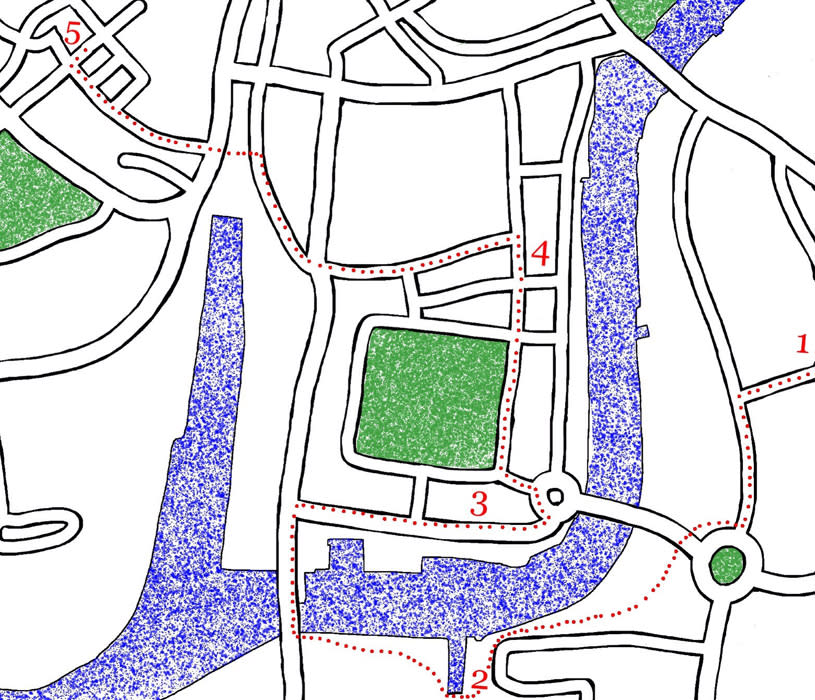
Seven Stars
Our historic pub crawl begins at the Seven Stars Pub. Tucked away down Thomas Lane in Redcliffe, an alleyway beside the famed music venue The Fleece, this tavern played an important role in countering the darkest chapter of Bristol’s history.
The Seven Stars opened in 1694 and was a popular venue for sailors stationed on the nearby Welsh Back. Towards the end of the 18th century, Bristol had profited greatly from Transatlantic slavery and many of these same sailors were involved either in the transport of enslaved West African people or the trade in goods which had been produced by their labour.
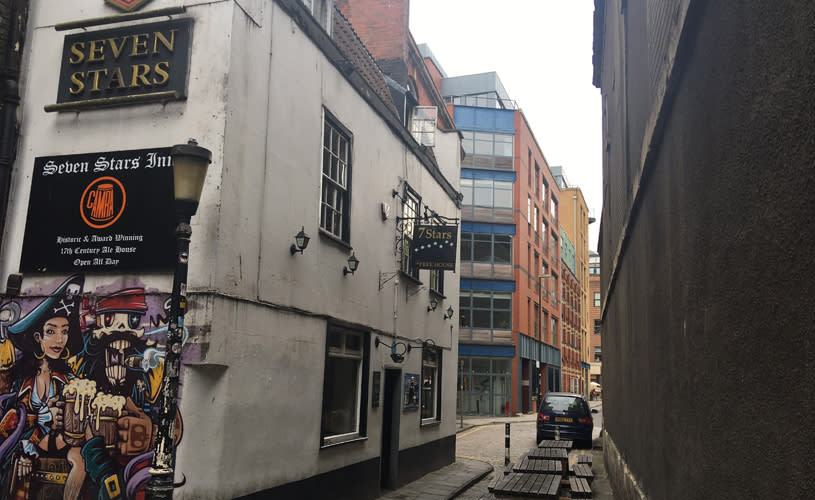
Image - Seven Stars
In 1787 Thomas Clarkson, an abolitionist from Cambridgeshire came to Bristol and set up an office in the Seven Stars pub, and along with the pub’s landlord Mr Thompson, began interviewing sailors about their experiences of Transatlantic slavery and documenting the horrors of what they had witnessed.
Clarkson presented his findings to parliament and also made them available to the public - exposing the harrowing details to the British people who had been mostly unaware of them.


Image - Thomas Clarkson plaque at Seven Stars
One person who was appalled by Clarkson’s findings was a young William Wilberforce, whose tireless efforts contributed to the British involvement in slavery being outlawed in 1833. It would take even longer for international laws to change, but this humble pub will forever be remember in history as a birthplace of a movement to end a truly abysmal trade.
Head to Welsh Back and follow the harbour south, crossing the road at the zebra crossing before heading onto Phoenix Wharf. Round the bend in the harbour is the Ostrich Inn, the scene of our next stop.
The Ostrich Inn
The Ostrich is home to one of the most popular pub gardens in all of Bristol. On summer days, the ample outside seating can get very busy as locals enjoy a pint of cider overlooking our beautiful harbour, but it’s what’s hidden inside which tells an unusual tale from the city’s history.
A section of the wall has been knocked through to reveal an intriguing tunnel, beyond which is the complex of narrow passageways which make up the Redcliffe Caves.
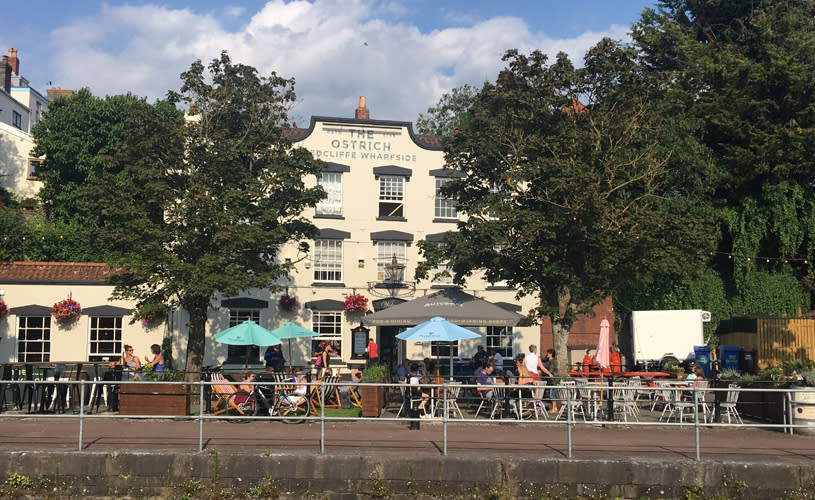
Image - The Ostrich
Despite the name, the Redcliffe Caves are actually mines, as the labyrinth of tunnels was entirely dug by hand to mine the fine sand found within. This sand was perfect for glassmaking, which Bristol had become famous for.
The exact extent of the network of mines remains unknown as during WWII a German bomb led to a cave-in which sealed off a potentially vast section of the unmapped network, so it is possible that the Redcliffe Caves could weave for miles beneath the city.

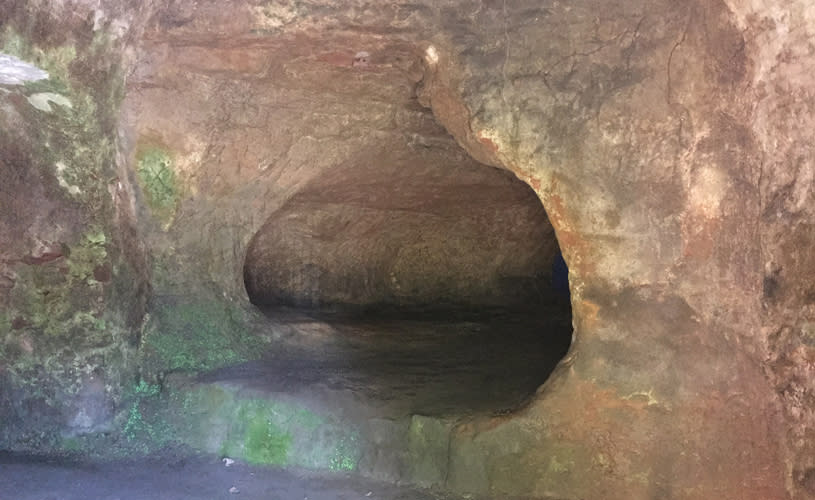
Image - Redcliffe Caves
The mines were first carved in the Middle Ages and continued to be dug until the mid 19th century. The Ostrich opened in 1745 and it has been said that rather than layering the floor of the pub with sand to make cleaning up easier, the Ostrich used sand and employed local boys to gather sand from the caves who would be paid a bonus in beer, leading to the (possibly untrue) origin of the term “happy as a sandboy”.
Continue following the harbour until you reach Prince Street Bridge. Cross this and then double back on yourself by following The Grove until you reach The Hole in the Wall pub.
The Hole in the Wall
The charming Hole in the Wall pub on the edge of Queen Square is believed to have been the inspiration for the Spyglass Inn in Robert Louis Stevenson’s classic Treasure Island, which features in the chapter where Jim Hawkins and Long John Silver have their fateful first encounter, in fact the pub has had a long history of being associated with seafaring, being popular with sailors and merchants for centuries - as can be seen by the pub’s most unusual feature.
- Find out more about Bristol's Treasure Island connections on the Blood, Blackbeard and Buccaneers tour
In a snug built into one of the walls of the pub there are two narrow, vertical windows. These were spy-holes and were built to ensure the safety of the pubs clientele.

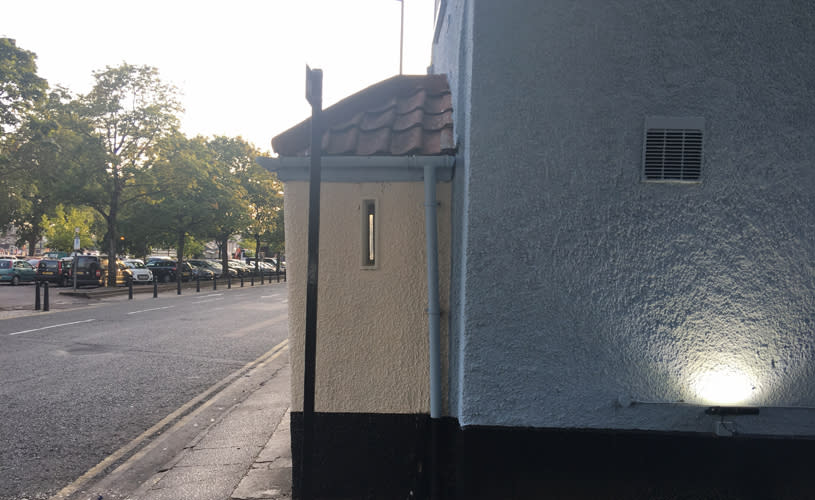
Image - Spyglass at Hole in the Wall
On busy nights during the 18th century, press gangs (unruly mobs employed by privateers to find seamen for their voyages) would descend on popular pubs and “coerce” the patrons onto privateering ships. Privateering was a kind of legalised piracy and conditions onboard were often atrocious, so the press gangs would often resort to violence if necessary. There were even tales of press gangs getting sailors so inebriated that they fell unconscious, only to wake up hungover and now aboard a vessel on the high seas.
The spy-hole provided a means by which a watchmen could discretely keep an eye out for the approach of the press gangs and ensure the safety of those drinking inside, thus preventing them from falling into the hands of the loathed privateers.
Cross Queen Square to Queen Charlotte Street and follow it until you reach the Llandoger Trow.
The Llandoger Trow
Taking its unusual name from a kind of flat-bottomed trading boat from Wales, The Llandoger enjoys a literary pedigree unmatched by any others in Bristol.
Like the Hole in the Wall, the Llandoger was inspiration for Treasure Island, taking the name of the Admiral Benbow in the classic book. It is also believed to be the place where Daniel Defoe met Alexander Selkirk - an encounter that would lead to Defoe writing The Life and Surprising Adventures of Robinson Crusoe.
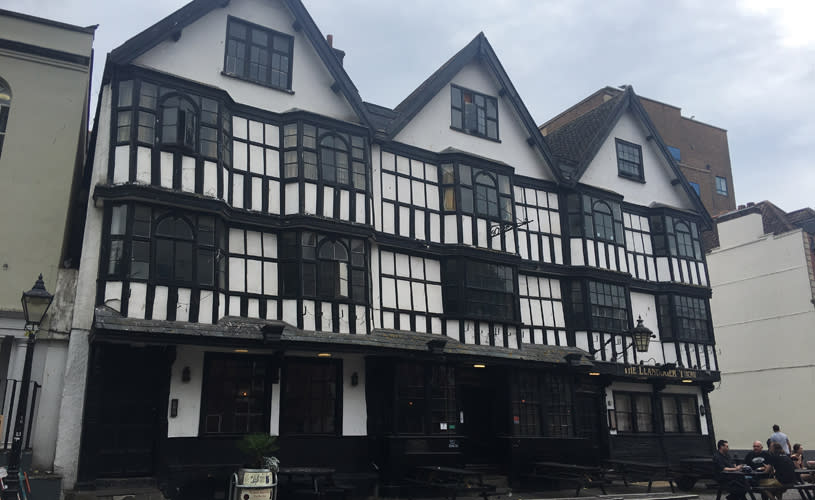
Image - The Llandoger Trow
Selkirk had been a naval officer but by 1704 he was working as a privateer in the South Pacific Ocean. Following a savage battle with a French ship, Selkirk and the rest of the crew landed on the uninhabited Mas a Tierra island, off the coast of Chile.
So damaged was the ship, Selkirk refused to get back on it, claiming that he would rather take his chances on the island than risk drowning. The captain took him at his word and abandoned him with nothing more than a few tools, blankets and a bible.
Selkirk was deserted for four years and four months until rescue came in the form of a British merchant ship. Upon his return to Britain he moved to Bristol and was soon sharing his remarkable tale of survival to anyone who would listen. It is likely that this is when Defoe met him and ten years later, Robinson Crusoe was first published.

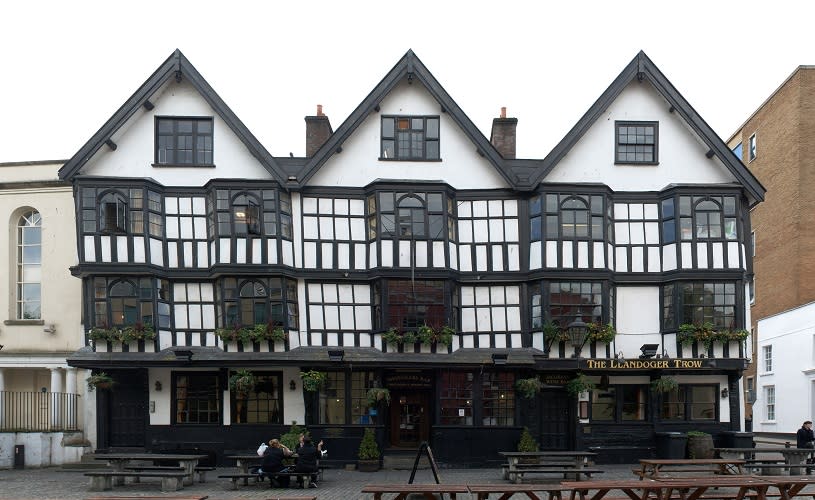
Image - The Llandoger Trow
It is not just for its literary history that the Llandoger is famous. It is claimed to be the most haunted pub in Britain, and possibly the world with up to twelve ghosts reportedly in residence. Among them are famed Georgian actress Sarah Simmonds, the legendary pirate Blackbeard and a rather sorrowful small boy who stares forlornly down at passersby from an upstairs window.
Whatever the truth about ghosts, the Llandoger is a historic and beautiful pub that will hopefully remain one of the most beloved in Bristol.
Follow King Street past the Bristol Old Vic, then head over St Augustine’s Parade towards the Hippodrome. At the end of nearby Denmark Avenue is the Hatchet Inn - the final stop on our pub crawl.
The Hatchet Inn
The charmingly crooked Hatchett Inn was first licensed in 1606, which means it is quite probably the oldest pub still operating in Bristol. It enjoys a reputation as a somewhat counterculture venue with an eclectic mix of patrons at the weekend.
One of the best known legends of the pub is that the front door, which is estimated to be over 300 years old, is lined with the skin of executed criminals. Could this legend be true? Almost certainly not but that didn’t stop an American tourist from offering a vast sum of money for it in the 1960s - an offer which was politely declined.
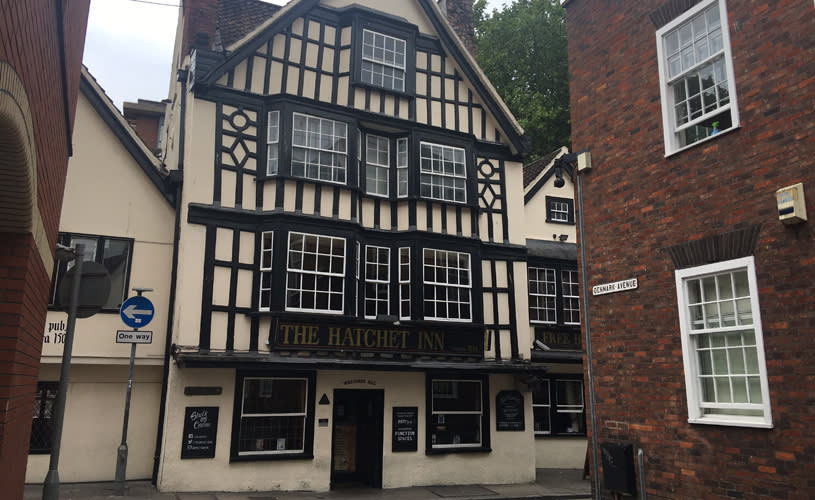
Image - The Hatchet Inn
Another legend, which probably has some truth to it is that a young Edward Teach (or Thatch) was a regular and though at this time he was a law-abiding sailor, he would go on to become Blackbeard - the most feared pirate on the seven seas.
Although many stories of Blackbeard are greatly exaggerated (and may even have been propagated by Teach himself) Blackbeard was a wildly successful pirate who patrolled the oceans aboard the Queen Anne’s Revenge, spreading terror wherever he went until he died in battle in 1718.
Despite the gruesome rumours about the pub’s door and its formidable former patron, the Hatchet offers a warm welcome and a delightful pub garden - perfect for the end of this tour through some of the most historic pubs in our wonderful city.
About the author
Charlie Revelle-Smith is an author of fiction and non-fiction books. He also curates the popular Weird Bristol on Instagram which document the lesser-known history of Bristol. His books 'Weird Bristol' and 'More Weird Bristol' are available to buy now.
Pin it for later:






